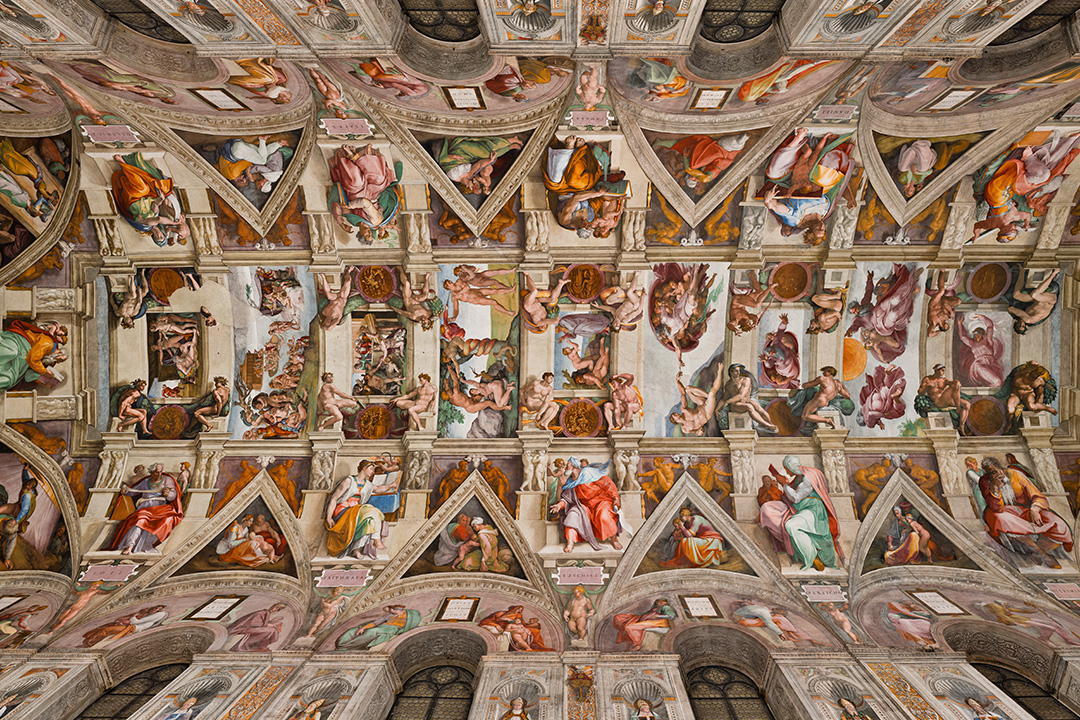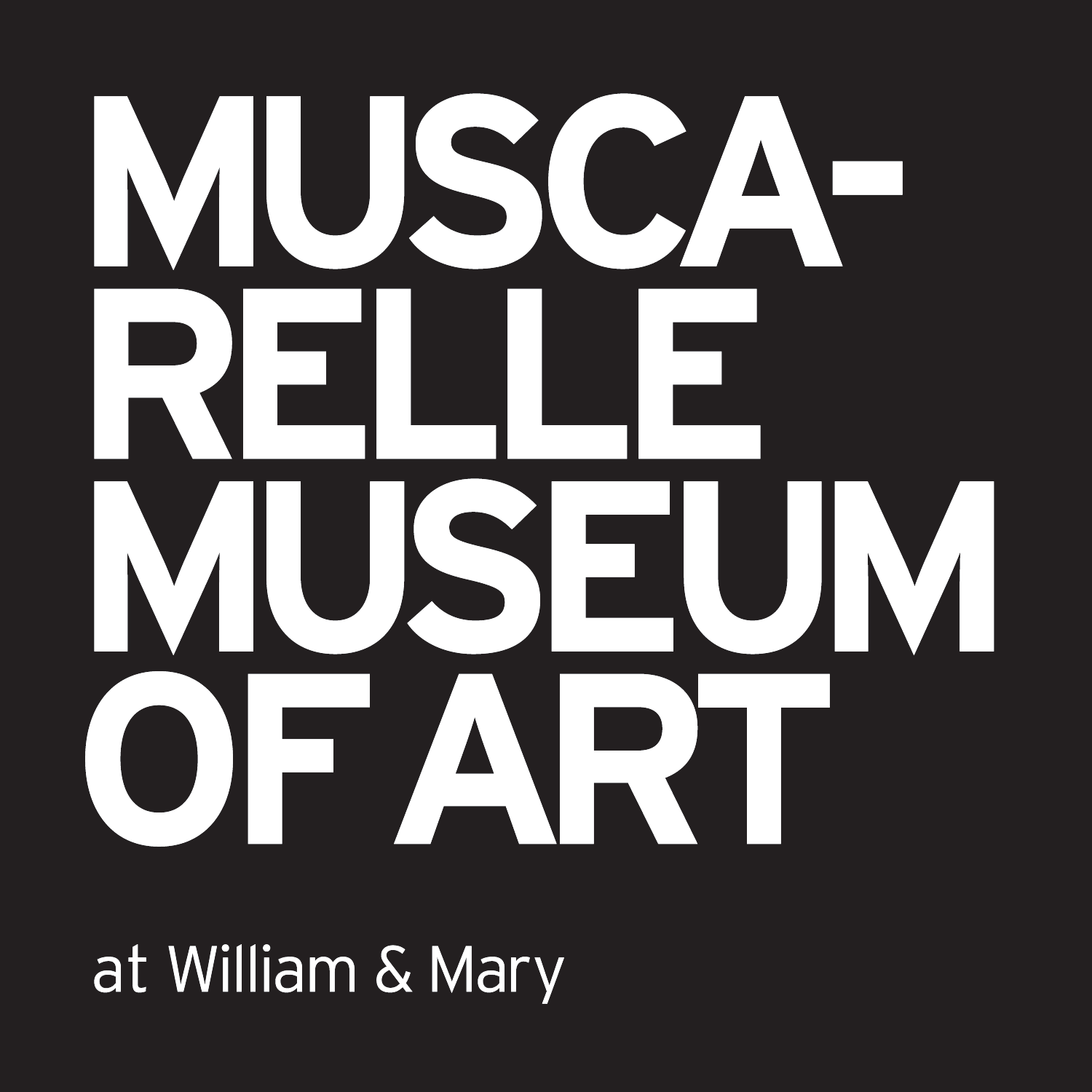Inside the Genius of Michelangelo: A Q&A with Exhibition Curator Adriano Marinazzo
You have been studying Michelangelo for many years. What first drew you to the work of this great artist?
My journey with Michelangelo has been a long and deeply rewarding one. In Italy, graduating high school involves a national final exam, which is a significant milestone. For my oral exams, I chose art history and mathematics. When the art history examiner asked me about Michelangelo’s frescoes at the Sistine Chapel, I felt lucky since it was one of my favorite subjects. I was just seventeen at the time, but even then, I found myself completely immersed in the study of his genius.
You’ve made a number of exciting discoveries about Michelangelo’s work that are expanding the conversation around the artist as we mark the 550th anniversary of his birth. How do you bring new eyes and fresh ideas to a topic so long studied?
Michelangelo’s work, especially masterpieces like the Sistine Chapel, has been meticulously studied, making it both a privilege and a challenge to uncover new perspectives. However, I’ve been fortunate to access some of the most significant archives and collections related to the artist, including those at Casa Buonarroti, thanks in part to my friendship with the late Pina Ragionieri, its legendary director. These archives, which house Michelangelo’s drawings, letters, poems and other rare documents, have been invaluable.
By combining this unparalleled access with modern technology, I’ve been able to bring fresh insights to Michelangelo’s work. Digital tools have allowed me to compare artworks in new ways, trace connections between seemingly unrelated pieces and reconstruct lost or unseen details. These reconstructions have revealed nuances that deepen our understanding of Michelangelo’s creative process and his broader vision as an artist and thinker.
I’ve published numerous studies on Michelangelo which have refined my understanding and contributed to the evolving narrative of Michelangelo’s genius. As my research progressed, I formed invaluable relationships with experts and institutions such as Casa Buonarroti, the Uffizi and the Vatican Museums. These collaborations enrich the exhibition, allowing us to include rare and previously unseen drawings.
The concept of the exhibition has continually transformed, integrating new discoveries and insights while ensuring a cohesive narrative of Michelangelo’s artistic journey. The exhibition now not only showcases these extraordinary drawings, some of which have never been displayed in America, but also reflects the evolution of our understanding of Michelangelo as both an artist and a man. This long-term scholarship has ultimately shaped a show that promises to be a truly unique and enlightening experience for visitors.
What do you hope visitors will take away from the exhibition?
Michelangelo: The Genesis of the Sistine offers visitors an unparalleled opportunity to step into the mind of one of history’s greatest artists and witness the creative process behind a masterpiece widely considered the pinnacle of artistic achievement.
I hope visitors leave with a deeper appreciation for Michelangelo’s creative journey — not only the monumental effort required to conceive and execute the Sistine Ceiling but also the deeply human struggles, ambitions and ideas that defined his work. The exhibition seeks to unveil Michelangelo’s brilliance, showcasing him as an artist who confronted and transcended challenges to create the extraordinary.
The exhibition spans five meticulously curated galleries designed to evoke the spirit of the Sistine Chapel. The first three are dedicated to the Sistine ceiling. Here, the walls, painted deep blue with gold accents and softly lit, create an intimate and reflective atmosphere. This environment invites visitors to feel as though they are stepping into Michelangelo’s private artistic world, blending reverence with accessibility.
One of the most exciting features is the global debut of what may be Michelangelo’s first sketch for the Sistine ceiling, discovered in the archives of Casa Buonarroti. The small drawing shows the architectural profile of the ceiling viewed from below, likely marking the genesis of Michelangelo’s vision. The exhibition also includes preliminary drawings of apostles from the Uffizi, displayed in America for the first time. These represent the initial concept for the ceiling — twelve apostles in a design that Michelangelo later rejected as “poor,” prompting him to reimagine the entire project on a monumental scale.
Visitors can also explore a fascinating comparison between Michelangelo’s self-portrait sketch and his depiction of God in The Creation of Adam, offering insight into how he saw himself mirrored in the divine.
In the fourth gallery, drawings for The Last Judgment, painted nearly 30 years later on the altar wall of the Sistine Chapel, further showcase the evolution of Michelangelo’s artistic vision. These four preparatory sketches, among fewer than a dozen surviving examples, illustrate the continuity and interconnectedness of his projects over decades.
Life-size reproductions of iconic frescoes, including The Creation of Adam, allow visitors to compare their own scale to Michelangelo’s monumental figures, making his work accessible and engaging.
The exhibition concludes in the fifth and final gallery with an immersive video art installation I created, titled This is not my Art. It offers a 3D representation of the Sistine ceiling’s architectural structure and highlights the awe-inspiring complexity and beauty of Michelangelo’s masterpiece, leaving visitors profoundly inspired by the true “genesis” of his unparalleled artistic achievement.
Michelangelo likely created numerous preparatory drawings for the Sistine Chapel ceiling, though few have survived. What do these remaining works reveal about his creative process?
Michelangelo did not view his drawings as works of art to be shared or admired. For him, they were private tools — preliminary ideas and problem-solving exercises created solely to plan the complex decoration of the Sistine ceiling. Because of this, Michelangelo deliberately destroyed many of his sketches, believing they were not meant for others to see.
His drawings for the Sistine ceiling are now considered rare and invaluable treasures. Vasari noted that Michelangelo destroyed many of his preparatory works before his death, including those for the ceiling. While he created hundreds of drawings to plan and execute the ceiling’s vast, 5,000-square-foot composition, fewer than 50 have survived.
Michelangelo: The Genesis of the Sistine presents nearly half of these surviving drawings, making it an exceptionally rare and meaningful opportunity to engage with Michelangelo’s creative process.
Like Michelangelo, your work sits at the nexus of art, architecture and technology. How do you weave these interests together?
Michelangelo was the quintessential Renaissance man. Beyond being a sublime artist and architect, he was a master of human anatomy, an exceptional engineer and a sophisticated poet. He was also deeply engaged with technology. Unlike Leonardo, who excelled as a theorist, Michelangelo was a hands-on innovator, creating and implementing solutions to overcome the technical challenges of his time.
In my COLL 100 course at William & Mary, Renaissance in 3D, I guide students through the designs of Michelangelo, Raphael, Leonardo and Brunelleschi. Alongside studying their historical works, students learn to design in 3D using professional modeling and animation software. This integration of art and science has always existed — after all, the word “art” comes from the Greek word for “craft” or “technology.” The two disciplines share a common foundation, and my work focuses on weaving them together.
This approach helps reimagine the old masters from a fresh, modern perspective. One of the goals of both the exhibition and my teaching is to bridge STEM and the arts, empowering students with the ability to apply new technologies to their work. Understanding this intersection not only enriches their appreciation for Renaissance achievements but also equips them with innovative skills for today’s challenges.
Michelangelo: The Genesis of the Sistine will open on March 6, 2025 in the newly-expanded Muscarelle. What makes this exhibition a unique opportunity — and one that people will not want to miss?
Michelangelo: The Genesis of the Sistine is a truly extraordinary exhibition, offering an unparalleled opportunity to experience some of Michelangelo’s most significant drawings. Both Michelangelo and the Sistine Chapel have been studied extensively for over five centuries, making it rare to present genuinely new perspectives. Yet this exhibition does just that, featuring seven drawings that have never before been displayed in the United States—a rare and extraordinary privilege for American audiences.



